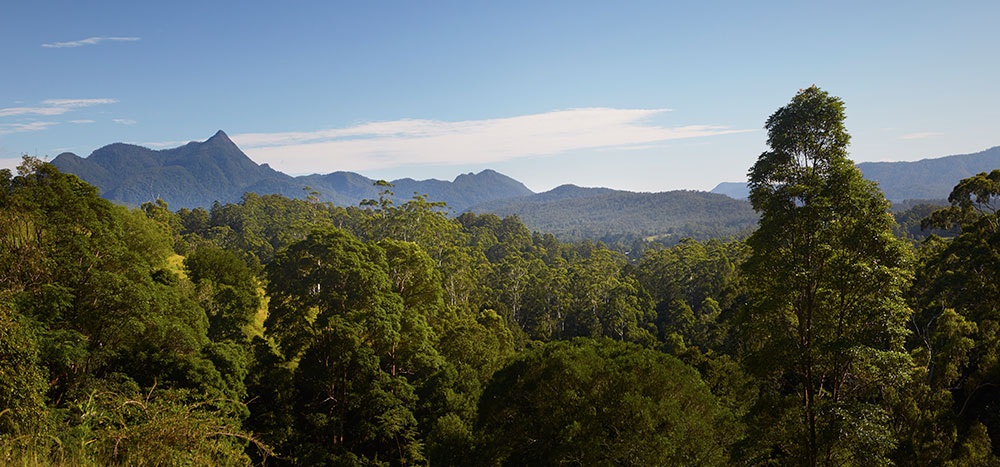Thunder eggs
Perch Creek Doon Doon Mount Jerusalem Couchy Creek
Thunder eggs found in the local Tweed area are the envy of collectors around the world. The remnant ridges of Wollumbin / Mount Warning have eroded away over millions of years to produce a treasure chest of gemstones and volcanic rock.

Read about the Tweed's geological history, including an extract from Australian Geographic.
Thunder eggs can look like unassuming spherical rocks from the outside, but once cut and polished they show a beautiful and wild array of colours and crystals. The different formations you see on display here are unique to the Tweed and not found anywhere else in the world.
Thunder eggs form in Tweed’s silica-rich volcanic rock, particularly rhyolite. They start life in flowing volcanic lava; as the lava cools, trapped steam and other gases form expanding bubbles. Silica and feldspar minerals crystallise around the bubbles or grow outwards from the centre. These mineral filled bubbles with a radiating structure are called spherulites, more commonly called thunder eggs.
Internal gas pressure can force the spherulite apart to form a central hollow, or cavity, and this can fill with solutions containing other minerals such as chalcedony, banded agate, or various forms of quartz. This hollow cavity is filled in over time with different mineral deposits, leaving layered patterns and shapes.
Thunder eggs appear different owing to the different naturally occurring minerals in their area. The volcanic rocks in the Chillingham area contain characteristic patterns that can be distinguished from those found in volcanic rocks at Doon Doon, which are different again from those found in the Perch Creek area.
This selection includes examples from the different localities as well as some internal or “vertebrae” types, where the surrounding spherulite has decomposed and eroded away.
Perch Creek
These thunder eggs were found at Perch Creek, along a continuation of the Doon Doon ridge. Most of this area is National Park. A large proportion of these specimens are from the O’Connor Brothers Collection, which was on display at the Murwillumbah Visitors Centre before being donated to the Museum. Thunder eggs in this area are hard to spot, often looking like common rocks. They often contain opalite which is created by water dripping continuously over the millenia.
Doon Doon
This group of thunder eggs were collected on or around Mount Nardi in the Doon Doon area.
Mount Jerusalem
These thunder eggs were found at Mount Jerusalem, south of Uki. These are vertebrae type thunder eggs and occur when the rhyolitic outer shell is far more prone to weathering than the harder chalcedony core. It is common to find these types covered in peridot crystals, a semi-precious green gemstone, which makes them sharp to handle.
Couchy Creek
These thunder eggs were found in the Chillingham area at Couchy Creek. They display a botryoidal shape that can resemble a cluster of grapes, often with a 12 pointed star centre. This shape is developed from clays with high silica content. The shape is unique to Couchy Creek and not found anywhere else in the world.